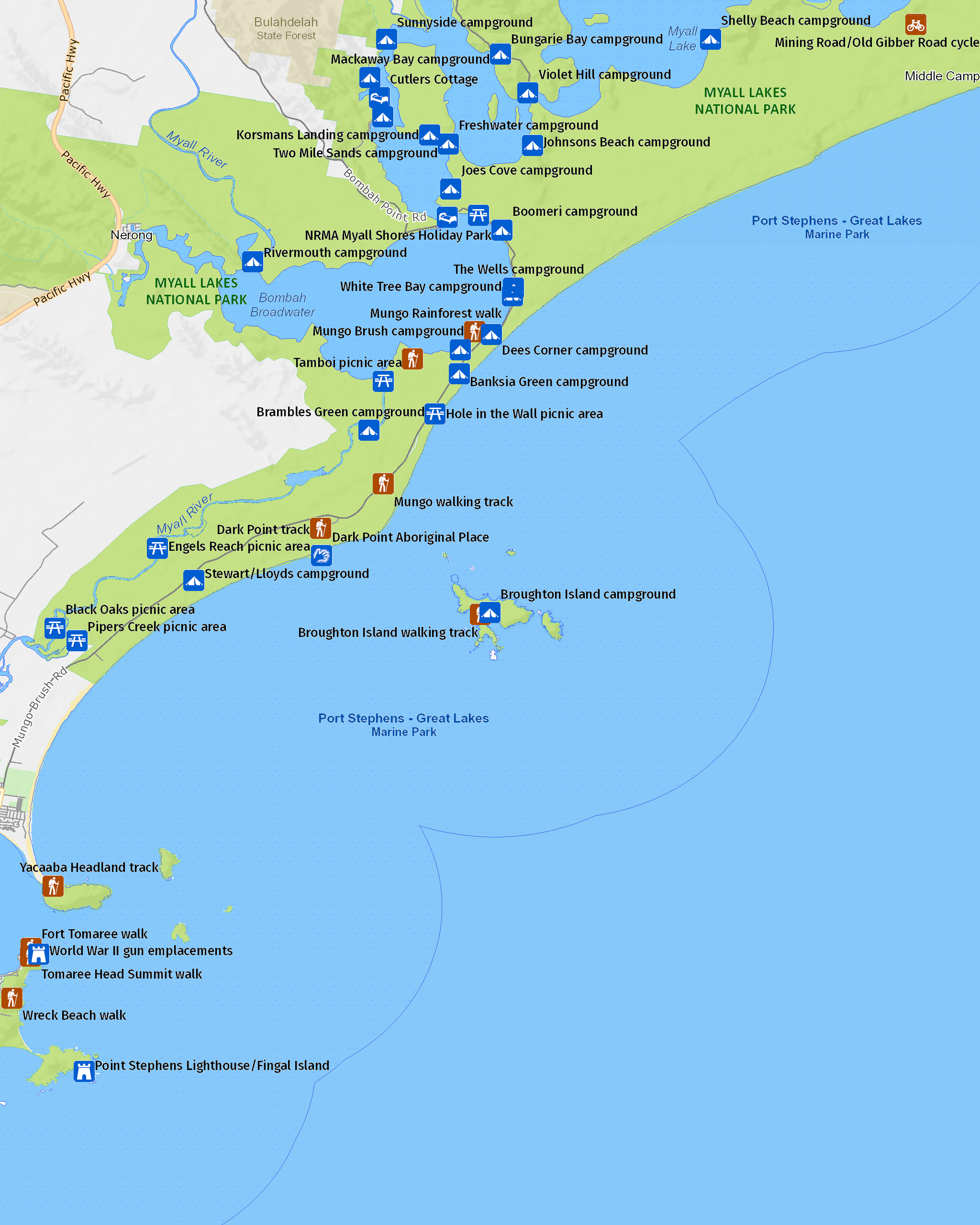Broughton Island campground
Overview
Accessible only by boat, Broughton Island campground is the only place in NSW where you can camp among an active seabird colony. The island is part of Myall Lakes National Park.
| Number of campsites | 5 |
|---|---|
| Camping type | Tent, Remote/backpack camping |
| Facilities | Toilets, unpowered sites |
| What to bring | Drinking water, cooking water, food supplies, mobile phone, first aid kit, tent, rope, sleeping bag, towels, torch, fuel stove, cooking utensils, toilet paper, clothes for all weather conditions, sturdy shoes, sunscreen, hat |
| Entry fees |
No park entry fees apply at this campground. See vehicle fees for other areas in Myall Lakes National Park. |
| Bookings | Bookings for up to 2 sites and 12 people can be made online. |
| Group bookings | This campground is not suitable for group bookings. |
| Please note |
|
Camping on Broughton Island is truly special and with only 5 campsites available, it offers a genuine getaway experience.
Located in Myall Lakes National Park, you'll be camping amongst an active seabird colony- it’s a key breeding site for wedge-tailed shearwaters, sometimes known as muttonbirds.
At just over 1 square kilometre in size, the island is small but there are plenty of opportunities for water activities like swimming, fishing, boating, snorkelling and scuba diving.
Access to the campground is by boat, and you'll need to arrive on the south-eastern side of the island, at the sandy beaches of Esmeralda Cove.
The campground is fairly basic, so you’ll need to bring all your equipment and supplies with you, including water. You must book and pre-pay for a campsite prior to arriving at the island.
Nearby
-

Broughton Island walking tracks
Broughton Island walking tracks are a great way for nature lovers to explore this remote island, accessible by boat from Port Stephens. Follow this family-friendly network of walking tracks to wild beaches and stunning lookouts.
Map

Map legend

Local alerts
For the latest updates on fires, closures and other alerts in this area, see https://www.nationalparks.nsw.gov.au/camping-and-accommodation/campgrounds/broughton-island-campground/local-alerts
Bookings
- National Parks Contact Centre
- 7am to 7pm daily
- 1300 072 757 (13000 PARKS) for the cost of a local call within Australia excluding mobiles
- parks.info@environment.nsw.gov.au
Operated by
- Anna Bay office
- Monday to Friday, 8.30am to 4.30pm.
- 02 4984 8200
- npws.huntercoast@environment.nsw.gov.au
- 4154 Nelson Bay Road, Anna Bay, NSW 2315
Visitor info
All the practical information you need to know about Broughton Island campground.

